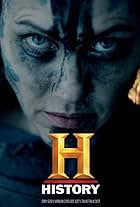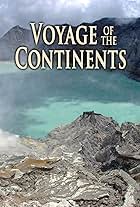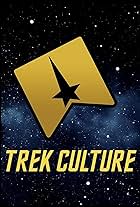Advanced search
- TITLES
- NAMES
- COLLABORATIONS
Search filters
Enter full date
to
or just enter yyyy, or yyyy-mm below
to
to
to
Exclude
Only includes titles with the selected topics
to
In minutes
to
1-50 of 3,122
- Sharp shooters compete in situations based on historical events.
- This program strives to give the viewer an impression of what it is like to actually be on the moon. It provides a romantic, inspirational depiction of the Apollo astronauts travels on the moon peppered by their quotations of their impressions.
- The great follow-up to 'Walking with Dinosaurs' and 'Walking with Beasts', presented by Professor Robert Winston, explains the story of human evolution.
- An alien awakes next to a case containing a glowing red object. He drags the case a great distance to his destination. removes the heavy object and and deposits it in the prescribed location. As he prepares to depart he is met with additional demands for more of the objects.
- When the cowardly bureaucrat Catus Decianus breaks a peace treaty with the Iceni by brutalizing and humiliating their queen Boudica and her daughters the Iceian and allies join the queen in a campaign of revenge against the Romans. They plunder Roman cities killing all the inhabitants and burning the cities to the ground until a vastly outnumbered Roman legion faces Boudica's furious hoard.
- The excavations of Pompeii reveal a thriving sex industry with prostitutes ranging from female slaves to male celebrities. But like today sexual promiscuity was not considered proper or even legal. This program examines how such blatant behavior could flourish under fairly strict social norms and whether Pompeii was a sexual hot spot or reflects common practice in the Roman Empire.
- Exploring the unexpected, into the scientific subjects that defy expectations.
- This 10-part mini-series is a sweeping account of the rise of Earth's continents. They are the product of a grand waltz of plate tectonics and the continual evolution of the earth's crust, assembling and separating.
- Noteworthy World War II battles of US General George S. Patton are examined.
- Astrum is your tour guide to the Solar System and beyond. As humankind's space probes traverse the Solar System Astrum takes you along to learn what they discover about the sun, planets, moons and planetoids. And Astrum shares the findings of the growing fleet space telescopes.
- In two brutal days in 1934 Adolf Hitler and his senior staff would capture and execute Ernst Roehm, the rest of the senior leaders of the Sturmabteilung (SA) and perhaps 1000 other enemies and threats to his control of Germany. With Germany now under his control the expansion of Germany could begin.
- This program contends that the popular perception of the Muslim occupation of Spain toward the end of the first millennium is largely wrong. The eighth century Muslim invasion of the Iberian Pennisula was largely welcomed by the locals and rejuvenated the area with advanced technology, agriculture and a construction boom. This program describes these innovations. All this changed in the eleventh century when the regional government fragmented. That set the stage for the Christian invasion and the Islamic fundamentalist resistance leading to more of a civil war than a holy war that decimated the region with corruption, destruction and exile.
- Program provides an historical archive of how gangsters took advantage of changes in public policy to gain wealth and power in the first half of the twentieth century and how they met their ends. The post World War I raise and fall of bank robbery gangs is briefly described.
- Urartu was an early first millennium BC kingdom located in the Armenian highlands. Thanks to its animosity with Assyria, it had militaristic society and is thought to be the first kingdom to convert form bronze to iron weaponry leading Assyria to quickly follow suit. The kingdom is also know for an aqueduct, the Channel of Semiramis, a remarkable engineering feat for it's time. In modern times Urartu was unknown until the mid 1800s. Much of its history is now well documented but as of this writing the story of its beginnings and disappearance are still unclear.
- This program examines the history and physiology of crucifixion. Though generally associated with the Roman Empire, it began with impalement, a method of public execution by torture, in the Assyrian Empire. Through extensive use the Roman Empire refined methods to maximize and, by delaying death, extend the suffering of the victim. In recent centuries crucifixion has experienced a renaissance in various forms but with the same purpose; state sponsored terrorism to suppress opposition.
- The Juno probe has conducted extensive orbital and instrumentation studies on Jupiter, providing insights into its storms and interior, and enabling new simulations on its impact on the Solar System.
- Discovery examines the history of "Golden age of Piracy." The program takes a detailed look at the harsh lives of pirates, their tactics, motivations and why they would choose such a life. The geopolitical forces that lead to the proliferation of pirates and their final demise are explained.
- A British company who broadcast since 2020 on YouTube with varieties of Star Trek Universe - "Trekker" culture. An easy to watch documentary YouTube channel for educational and reference pop culture.
- We join the trial of a suspected serial killer as the judge gives his final instructions to the jury. The jury seems set to convict but the foreman persuades them to first examine the evidence. As he reviews the evidence and describes the various murders the jurors begin to waiver. As the foreman continues to vividly recount the killings one by one it becomes more and more obvious that he is more involved in the case than he is letting on.
- A scientist wants to recover some mammoth DNA to clone a live mammoth. So he finds a buried mammoth in the vast, rock hard permafrost of Siberia, digs it out in the middle of a blizzard and flies it home. Of course he needed a little help. So he befriended an arctic nomad who knows ever rill, rock, pond and stream in the entire region. As background to the quest, National Geographic relates the migratory history of the mammoth family.
- Paleontologist Jack Horner questions the assumption that Tyrannosaurus Rex was a predator. He thinks there is a reasonable chance it was a scavenger that had little ability to hunt or even run. He's out in the field looking for evidence to try to settle the debate.
- Caspian Report provides analysis, news and relevant history about geopolitics. The primary focus of the channel in Asia with occasional ventures into Africa and the Americas. Stories include both cooperation and conflict presented from multiple perspectives with occasional informed prognostication.
- Great Canadian Rivers visits the 40 rivers large enough to support commercial trade of one sort or another sometime after the Europeans arrived. The many aspects of the rivers are described including; geology and formation, course though the Canadian landscape, environments from the headwaters to the sea, ecology and wildlife, history of human use from commerce to recreation, and indigenous and current inhabitants whether in outposts, villages or cities. On the scene videography and archival photography illustrate the narration and interviews of local inhabitants.
- In her own spirited style Dr. Becky examines new discoveries and oft misunderstood topics in the field of astrophysics with the occasional help of a guest. And if you ask nicely she might comment on the physics of your favorite sci-fi program.
- Inadequately prepared for the responsibilities George Washington accepts first as a British officer and later as the commander of the Colonial Army, his mistakes lead to battlefield and political failures and and disgrace. But Washington learns from each round of failures and through devotion to his duty recovers his reputation and eventually gains the adulation of the new United States.
























